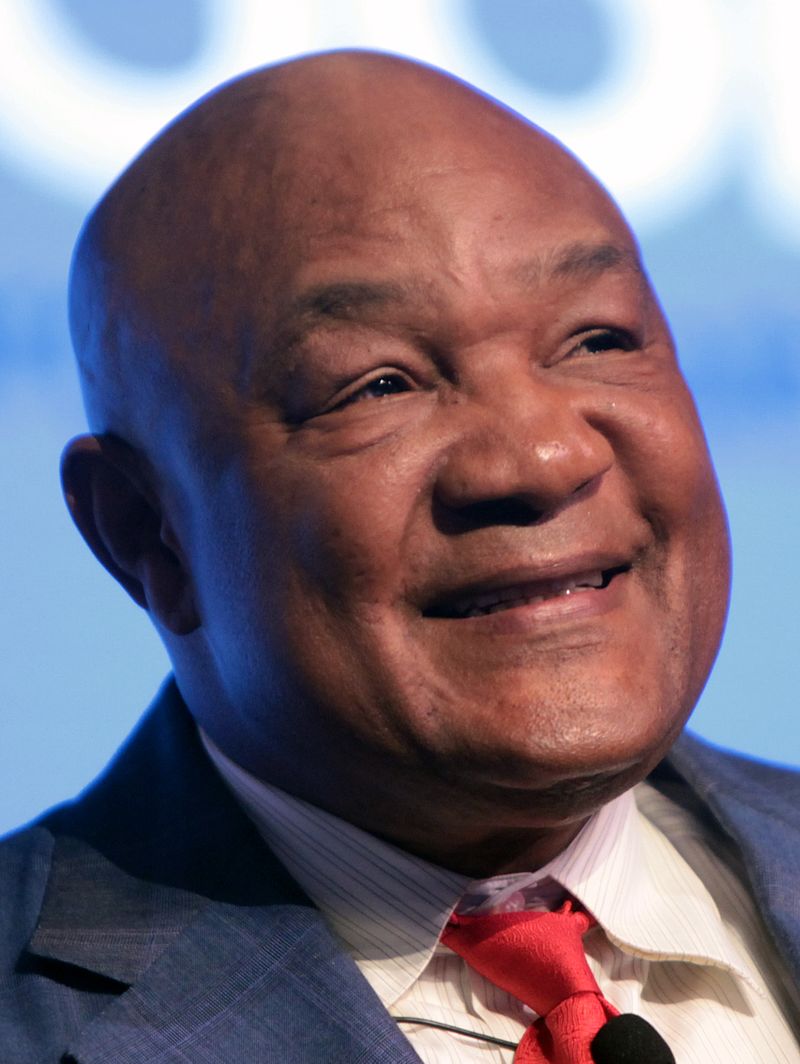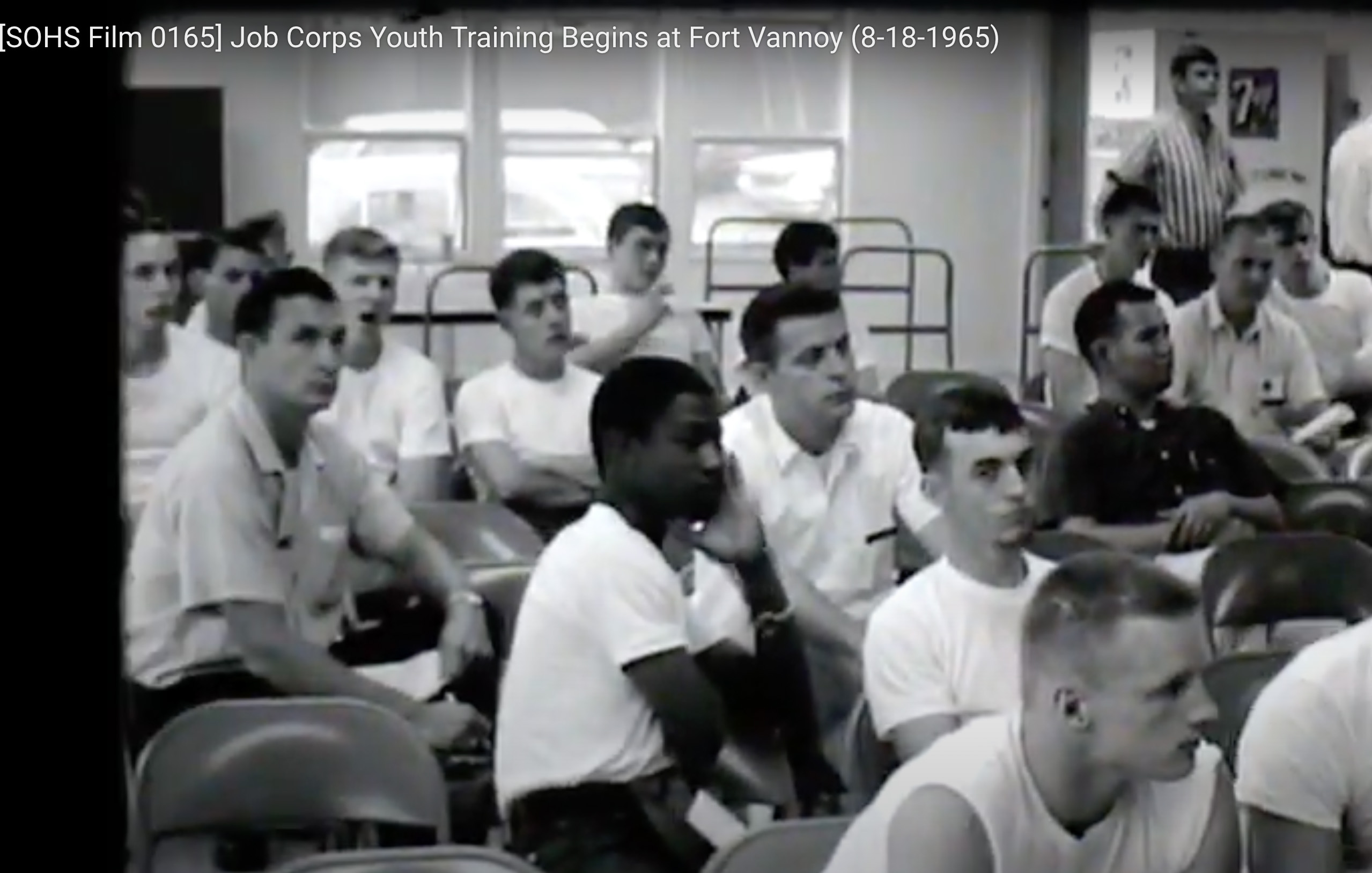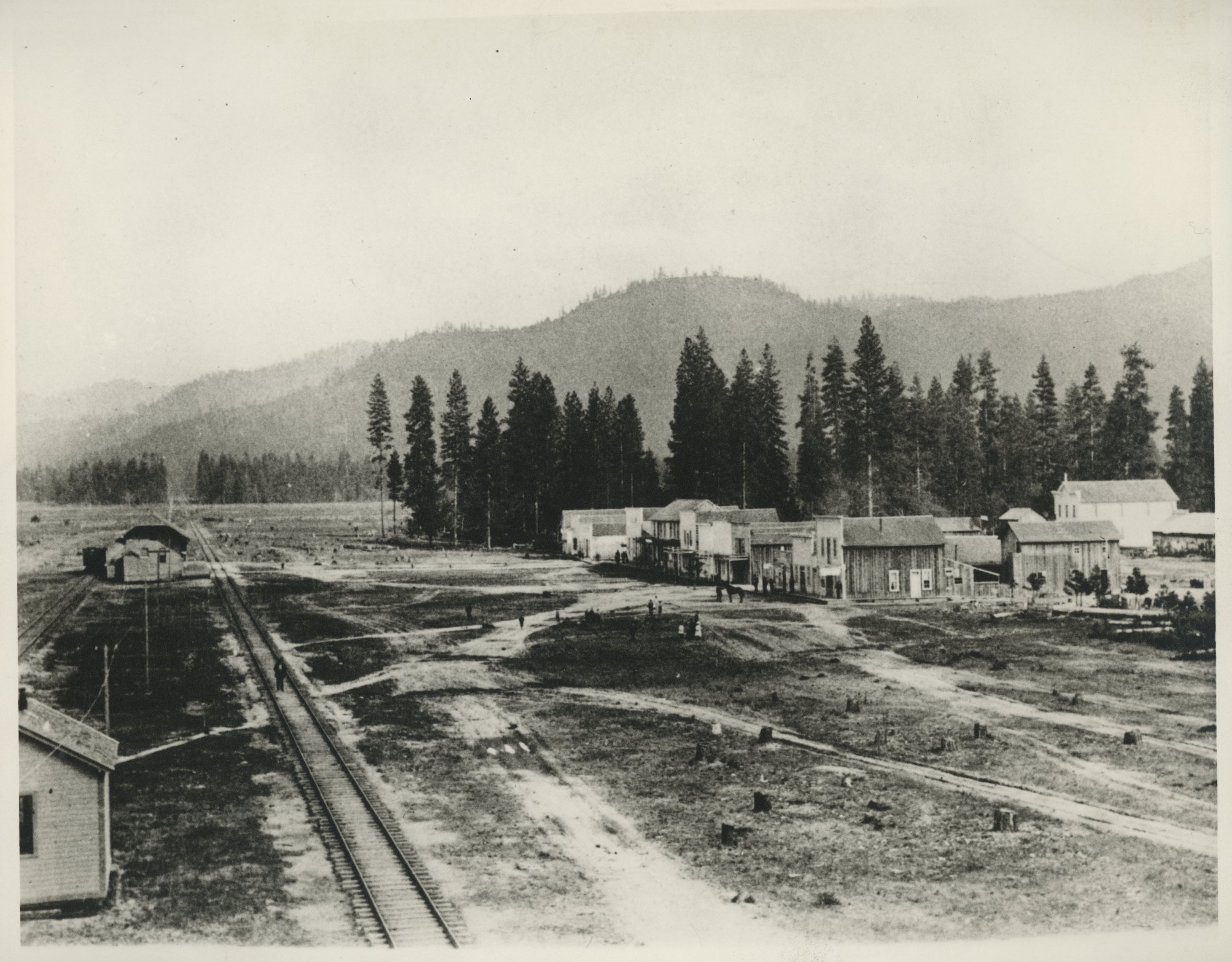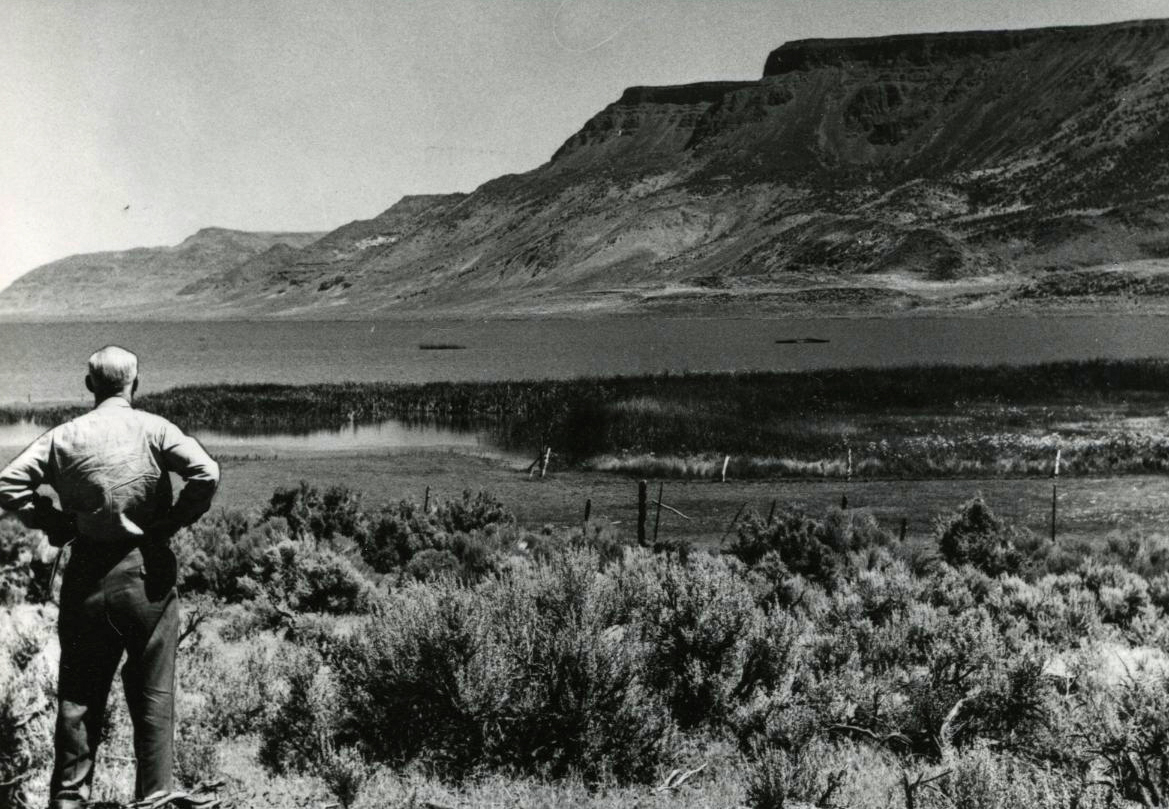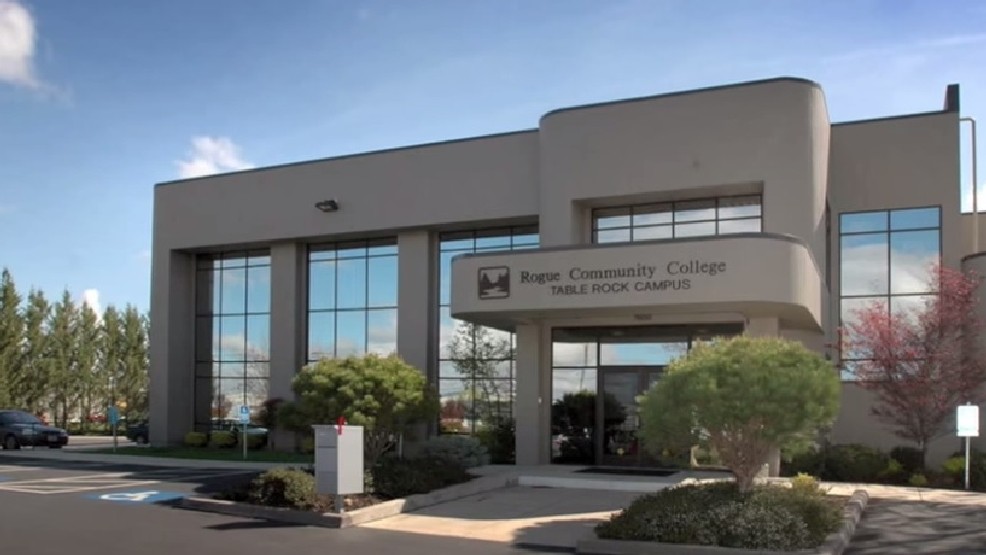Although best known as a champion boxer from Texas, George Foreman remembered the six months he spent in Oregon while a teenager as “the beginning of me.” A high school dropout, Foreman spent the latter part of 1965 in a Job Corps center near Grants Pass. He considered those months as the starting point of a career that compiled seventy-six wins and only five losses in the ring, and he was honored as one of ten Job Corps Graduate Heroes during the Job Corps’ fiftieth anniversary commemoration in April 2015.
The future professional boxer, Olympic gold medalist, and two-time world heavyweight champion was born on January 10, 1949. He and his six siblings were raised by their mother in the Fifth Ward neighborhood of Houston, Texas. He wrote in his autobiography that he never seemed to get enough food to eat, and he eventually dropped out of high school. Football was Foreman’s main sports interest at that point in his life, and a public service television announcement with Jim Brown and Johnny Unitas caught his attention. The two National Football League greats were touting the Job Corps, a new Department of Labor program for so-called troubled youths that Congress had created with passage of the Economic Development Act in 1964. Acceptance in the program represented a ticket away from trouble and what Brown called “a second chance in life.”
In August 1965, the Job Corps assigned sixteen-year-old Foreman to the Fort Vannoy Training Center, which operated for about three years near Grants Pass and later became the Redwood Campus of Rogue Community College. As it happened, Foreman found himself on the ground floor of a two-tiered program at a “conservation center,” where corpsmen received basic education and acquired general work habits. Statistically, the Job Corps worked best for those who remained in it the longest, especially if they received vocational training and education that supported job skills at an “urban” or “education” center, often operated by private contractors. Foreman was one of those corpsmen.
Grants Pass made a huge impression on the young Foreman. One of the cooks took him home for meals with her family and drove him to California for his next assignment in the Job Corps. The starting point for his career as a boxer, Foreman later said, was at Fort Vannoy. One night in November 1965, he listened to a radio broadcast of the bout between Muhammed Ali and Floyd Patterson. One of the corpsmen asked him about becoming a boxer, since he was so tough, something he heard as both a challenge and an inspiration. Foreman learned to box from Charles “Doc” Broadus, at the Parks Center run by Litton Industries in Pleasanton, California. He left Fort Vannoy for the Parks Center in February 1966.
Foreman won his first world heavyweight title from Joe Frazier in early 1973 but lost it to Ali in late 1974. He recovered the title on November 5, 1994, by defeating Michael Moorer and became the oldest man, at age forty-five, to be crowned champion in that weight class. Away from the ring, Foreman recruited for the Job Corps after winning his Olympic gold medal in 1968. He later became a Pentecostal minister and motivational speaker and ran a youth camp outside Houston. Foreman died on March 21, 2025.
-
![]()
George Foreman, 2016.
Courtesy Gage Skidmore -
![]()
Fort Vannoy Job Training Center, 1965.
Courtesy Southern Oregon Historical Society
Related Entries
-
![Grants Pass]()
Grants Pass
Located on the Rogue River about thirty miles northwest of Medford, Gra…
-
![Hart Mountain Civilian Conservation Corps (CCC) Camp]()
Hart Mountain Civilian Conservation Corps (CCC) Camp
Camp Hart Mountain, a Civilian Conservation Corps camp, operated from O…
-
![Rogue Community College]()
Rogue Community College
Josephine County voters approved the establishment of Rogue Community C…
Map This on the Oregon History WayFinder
The Oregon History Wayfinder is an interactive map that identifies significant places, people, and events in Oregon history.
Further Reading
Duewel, Jeff. “Boxer recalls Grants Pass as the beginning of me.” Grants Pass Daily Courier, November 6, 2006.
Foreman, George, with Joel Engel. By George: The Autobiography of George Foreman. New York: Villard Books, 1995.
Levitan, Sar A., and Garth L. Mangum. Federal Training and Work Programs in the Sixties. Ann Arbor: Institute of Labor and Industrial Relations, 1969.
"Job Corps Youth Training Begins at Fort Vannoy" (film), Southern Oregon Historical Society, 1965.
"George Foreman, the fearsome heavyweight who became a beloved champion, dies at 76." Oregon Public Broadcasting.

